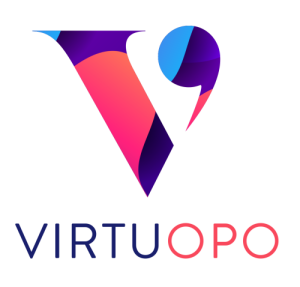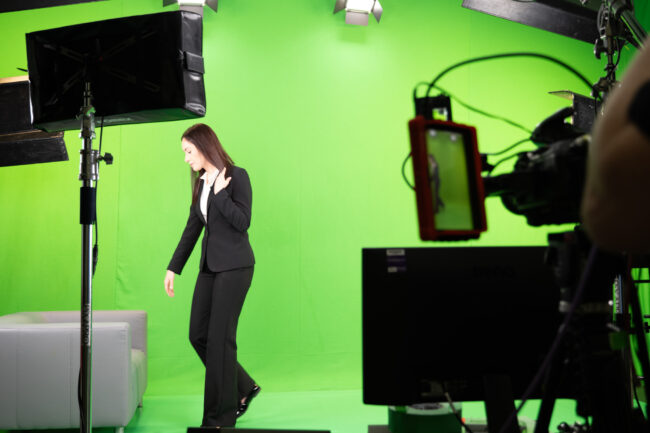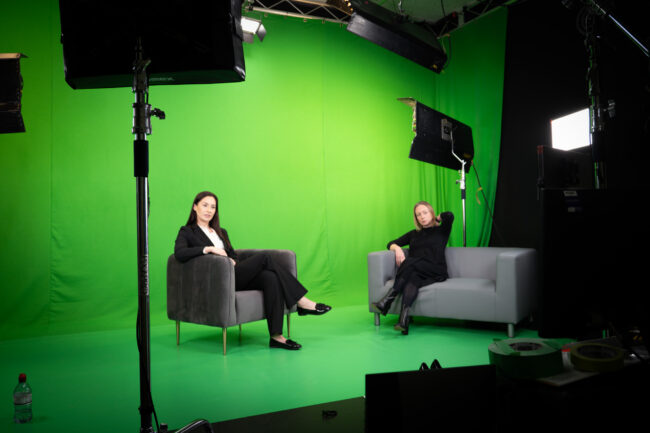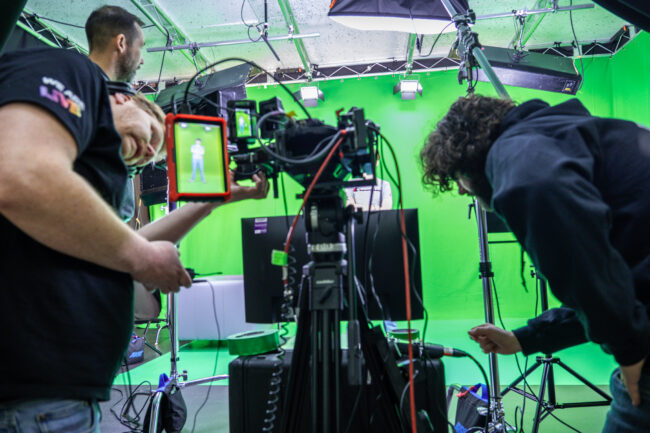Audience engagement is at the forefront of every event organiser’s mind. It reflects the overall success of your event and your ability to connect with your guests.
This guide will help you understand the ins and outs of audience engagement and its importance within the industry.

What is Event Engagement?
Event engagement is the level of participation and interaction guests have at an event. It measures how well you have captivated and retained the audience’s attention, organisers should always aim to create a memorable experience for their guests.
How engagement is measured can differ depending on the event format, for example in-person, virtual events and hybrid events engagement can be measured using different metrics.
Pre-event Engagement
Pre-event engagement refers to the level of engagement achieved before the event has even begun. The build-up to an event is important to get right, as you want to build excitement and maximise sign-ups leading up to the event.
It also helps to create a relationship between attendees and organisers, building brand trust and generating word-of-mouth excitement.
The aim is to create excitement leading up to your event, creating a sense of anticipation for guests.
Here are some proven ways to engage your guests before the event has even started:
- Dedicated Landing Page – A landing page helps potential attendees find all the information they need about your next event. Make sure to include all relevant details, ticket links and any other useful information.
- Email Communication – Send out frequent reminders to keep people up to date with what’s happening, include information that will help build excitement for your event.
- Online Ticketing – Utilising a ticketing platform will make the ticket-buying process much more user-friendly.
- Pre-event Surveys – Sending out surveys before the event can give insight into what your guests want from your event. This could include their choices of entertainment, event theme and even food and beverage preferences.
- Social Media Activity – Harnessing the reach of social media will allow you to grow your event’s presence online, consider using an event hashtag event’s to allow users to share their thoughts and content relating to the event.
Event Engagement
Keeping attendees engaged during an event is vital, you want to keep them excited and interested in what’s happening. It’s down to you to create an exciting atmosphere that provides guests with an unforgettable experience.
Here are some examples of how you can engage your attendees:
- Host and Guest Speakers – Make sure to invite an engaging host who can hold your guest’s attention, as well as interesting guest speakers who are relevant to your event theme and content.
- Interactive Activities – Introduce activities that will encourage audience participation such as quizzes, polls and Q&A sessions.
- Rewards – Give incentives to event attendees to fill out surveys or to create social media posts reviewing their experience, using goody bags, vouchers and discount codes to encourage participation.
Post-event Engagement
Measuring engagement after the event can help gather extremely valuable data that can be used for future events.
Here are somenways you can engage your guests afterwards:
- Social Media – Posting about the event afterwards can help generate excitement for the next one, interacting with guests through social media can allow you to begin building relationships.
- Follow-up – Send follow-up emails to both attendees and no-shows. Thanking people who showed up to your event is a great way of connecting and staying in contact. Contacting no-shows can also help boost attendance for future events.
- Post-event Survey – Sending out post-event surveys allows guests to provide feedback so you can continue to improve future events.
How Do We Measure Event Engagement?
A recent survey found that 71.2% of event organisers find it difficult to prove the ROI of in-person conferences to stakeholders. However, with careful planning, you can identify the metrics by which you measure the success and ROI of your event.
Event Surveys
Post-event surveys are a good way to measure the general satisfaction of your audience following your event. This information will inform your future event planning, giving you key insight into the attendee’s level of engagement throughout the event.
Receiving feedback on your event is a great way to improve your attendee engagement for upcoming events.
Social Media
Social media metrics can be used to gauge the level of engagement surrounding your event. Analysing key metrics such as likes, comments and shares can indicate the effectiveness of your event.
If you have created an event hashtag for users to post about their event experience, measure its usage to gauge the excitement surrounding your event. Tracking your event hashtag allows you to identify what people are responding to and allows you to identify the most engaged attendees.
Registrations
The number of registrations can indicate the levels of audience engagement leading up to the event. You can also break down registration data to see who has responded well to your marketing campaign.
Attendance rates
Engaged attendees are more likely to stay the whole duration of the event. Tracking attendance rates gives you an accurate measurement of your event’s success and engagement levels.
Virtual events can make it easier to track attendance rates because guest’s activity can be monitored more closely.
Attendee Engagement
Virtual and hybrid events make it easier to track engagement levels. This is because the virtual elements often require users to create accounts and log in so event planners can accurately track engagement.
Interactive activities such as quizzes, polls and Q&A sessions can provide valuable engagement data.
Feedback Analysis
Asking for feedback from attendees gives you valuable data to inform future events. Asking users directly about when they felt most and least engaged can give you an idea of what needs to change to improve engagement.

Engagement Strategy
A well thought out engagement strategy is the key to event success.
Focus On Your Attendees
You need to understand who your audience is and how best to keep them engaged. Analyse your target audience and identify key demographics such as age, gender, location, income, education and religion.
By breaking down the specifics of your audience, you can better understand how to engage them. Regardless of who your audience is, the fundamentals of creating an engaging experience revolve around attendee participation and creating an interactive experience.
The attendee experience should be at the forefront of all event organisers’ minds.
Keep Your Audience Connected
Keeping your audience connected and engaged is one of the biggest challenges that event organisers face. Make sure you have planned a variety of engaging activities and content to keep your attendees engaged. This could include interactive workshops, trivia games, interactive games and any fun elements that can be introduced to keep people connected.
Traditionally in-person events were seen as the only way to host events, however, the rise of virtual events has changed the landscape of the event industry. Find out more about the benefits of virtual events here.
Create Networking Opportunities
Creating opportunities for your guests to network can be a great way for them to create meaningful connections with fellow attendees.
Consider the needs of your audience and build your event around them, different formats such as speed networking or just taking regular breaks naturally allow for networking to take place.
The importance of networking at events cannot be understated, as a recent event survey found that 77.7% of attendees agreed that conferences offer an ideal networking environment
Identify Engagement Indicators
Identify how you will measure your engagement. If you’re hosting an in-person event then you may choose to use attendance, mobile event app interactions, polls and Q&As as your engagement indicators.
However, if you’re hosting a virtual or hybrid event you may choose to use chat activity, interactions and participation as your engagement indicators.
Virtuopo Top Tip: Utilise interactive event technology such as mobile apps like Slido to encourage active participation through polls, quizzes and Q&As.

Advantages of a Strong Engagement Strategy
Boosts Brand Awareness
A strong engagement strategy will raise the profile and awareness of your brand. If you can excite your attendees throughout their stay they will be more likely to sing your praise and help you reach a broader audience.
Provides Useful Audience Data
A strong engagement strategy will help to gather valuable audience data that can be used to inform future event planning. Providing insights into user demographics, social media activity, interactive activity and attendance data.
This data can be gathered through event apps, social media channels, interactive sessions and any other event technology.
Builds Brand Loyalty
A positive event experience will ensure that guests return to future events, over time this will lead to brand loyalty, making users more likely to attend your events and use your services.
Enhances Customer Experience
A well-thought-out engagement strategy will enhance your customer’s experience. Well-planned event content goes a long way in keeping your in-person and virtual audiences engaged.
Generates New Leads
Generating new leads is one of the main benefits of a highly engaging experience. By creating a memorable event experience for your guests, you generate new leads as people will come to you to facilitate their future events or use your services.
Social Media Presence
A strong engagement strategy will help to grow your social media channels and increase your overall presence. An effective marketing strategy will help create a buzz around your event, encouraging user-generated content from guests can be a great way to increase awareness.
A strong social media presence is crucial for businesses because it helps establish trust, and expertise, as well as generating leads and enquiries.
Virtuopo Case Study
The team here at Virtuopo recently organised an in-person event for one of the world’s leading insulation manufacturers, handling all the planning including booking a venue, guest speakers, event content, as well as providing AV production services.
The summer conference aimed to update employees, recognise achievements and bring employees closer together, providing an immersive and engaging in-person experience.

We created an event theme that ran throughout the 3 days, this was reflected in the visual identity of the event, the bespoke website and even down to team names.
We planned several engaging activities for our guests such as sports challenges with FA coaches, darts competitions, live band karaoke, scavenger hunts and much more. These fun activities help to make colleagues feel more connected, spark healthy competition and create a much more immersive event experience for guests.
Overall it provided our client with 3 invaluable days that allowed them to communicate face to face with their organisation, passing on vital information and giving employees an experience that will bring them closer together.
If you want to find out more about the successful events we have delivered, visit our website here.
At Virtuopo, we pride ourselves on delivering professional live-streaming and event management services. To find out more about the services we can provide, please contact us on 0151 662 0275 or email info@virtuopo.com















